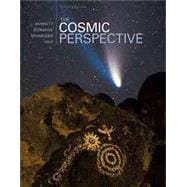Building on a long tradition of effective pedagogy and comprehensive coverage, The Cosmic Perspective, Eighth Edition provides a thoroughly engaging and up-to-date introduction to astronomy for non-science majors. This text offers a wealth of features that enhance student understanding of the process of science and actively engage students in the learning process for key concepts. The fully updated Eighth Edition includes the latest scientific discoveries, revises several subjects based on our most current understanding of the cosmos, and now emphasizes deeper understanding of the twists and turns of the process of science and the relevance of concepts to student’s lives.
For two-semester courses in astronomy.
Pearson eText is a simple-to-use, mobile-optimized, personalized reading experience. It lets students highlight, take notes, and review key vocabulary all in one place, even when offline. Seamlessly integrated videos and other rich media engage students and give them access to the help they need, when they need it. Educators can easily schedule readings and share their own notes with students so they see the connection between their eText and what they learn in class – motivating them to keep reading, and keep learning. And, reading analytics offer insight into how students use the eText, helping educators tailor their instruction.
NOTE: This ISBN is for the Pearson eText access card. For students purchasing this product from an online retailer, Pearson eText is a fully digital delivery of Pearson content and should only be purchased when required by your instructor. In addition to your purchase, you will need a course invite link, provided by your instructor, to register for and use Pearson eText.








